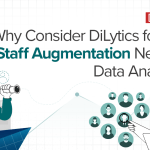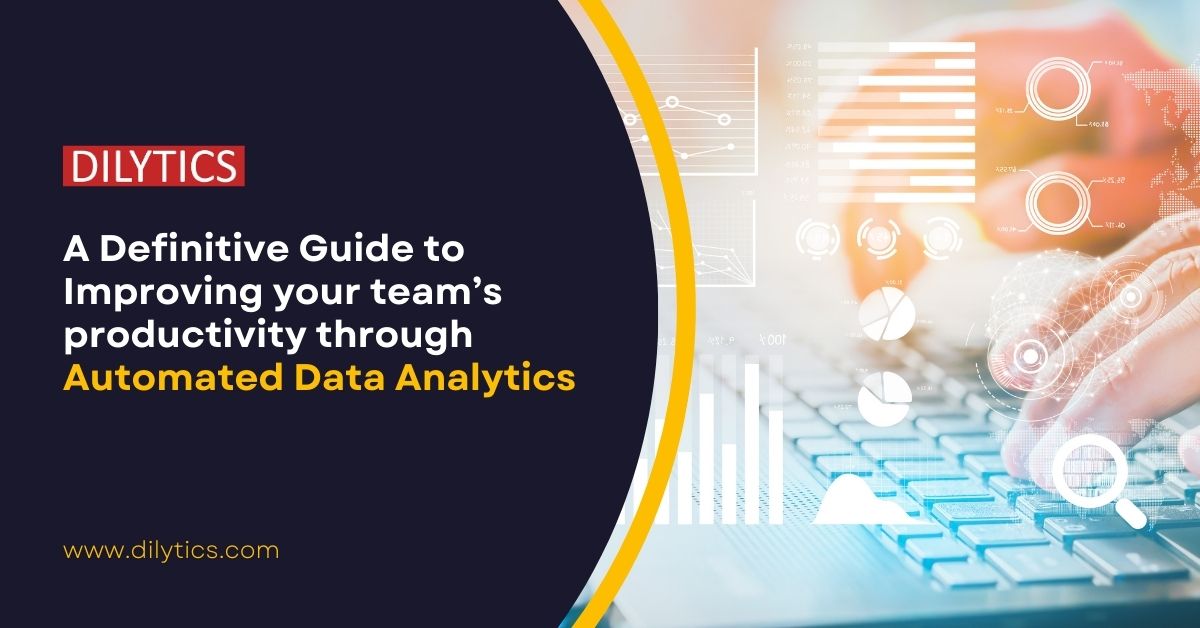Automated data analytics is the use of computer systems to deliver analytical products with little or no human activity. As the companies grow, data collection, data preparation, data classification and data replication tasks becomes too time consuming and complex for a single person/team to manage. Even if a company has a sufficient team that can handle these activities, there are chances that people working on these activities might move on leaving the business. So it’s a good idea to automate the data analytics for quicker and accurate outcomes without any human activity.
Table of Contents
It involves the automation of the entire or part of the data analytics life cycle by using AI/ML based computer techniques. It allows for fast insight discovery and decision making by allowing users to autonomously monitor and analyze large data sets.
With data analytics automation, businesses can quickly turn raw data into reliable insights and drive business transformation projects. AI-enabled data analytics automation offers several high-value use cases from customer engagement, predictive analytics, to product optimization.
Benefits of Automated Data Analytics
Speed & Accuracy:
Automation can increase the speed of analytics. It saves considerable amounts of time and effort in managing the data life cycle process right from data preparation to visualization, allowing data science teams to focus on core business areas and key problems. Data becomes more accurate because it is not being handled manually.
Cost:
Automated data analytics saves an enterprise time and money. Companies save money by building and automating the Data Analytics once rather than paying the employees continuously for an on-going manual support of Data Analytics. With SAAS based AI- platforms, companies can quickly scale their AI and data analytics efforts without a large investment in building and maintaining in-house AI capabilities.
Quality Insights:
By automating tasks that don’t involve a high degree of human imagination, data scientists can focus on creating new quality insights to handle the hard business problems.
Process Automation:
By automating analytics, any manual processes which are prone to human error can be automated to build future-proof processes and systems.
Benefits for predictive analysis:
Predictive analysis is typically a tedious, costly, and time-consuming endeavor. Automated data analysis languages and tools make it much easier to identify problems with prediction.
When to Automate Data Analytics?
With the push towards artificial intelligence (AI) in recent years, more people are considering automation of their jobs to produce high quality data, accurate data and reduce operations cost. The question for many businesses is when to automate; when does it make sense to develop algorithms or other AI-centric initiatives? Below are couple of scenarios on when automation is required.
If you create the report once, then there is no reason to automate the process but when you have recurring processes, such as creating data models that power dashboards for groups of employees and they need to be updated daily, weekly, monthly, or quarterly, those are great candidates for automation of the data pipeline and analysis.
Also Read: ETL Process Overview
Automated Analytics is the best option to handle error prone processes as it will reduce the chance of errors that are caused due to operating manually. One can also automate data validation to detect typos, flag and impute missing values.
How to Automate Data Analytics?
Data analytics has become a prominent part of the data science process. The process of analyzing data to answer questions is typically done manually by analysts, but there are different ways this can be automated.
One way that data analytics can be automated is through machine learning techniques. These techniques typically involve feeding data into a system that then learns from it and makes predictions based on the patterns it finds in the data.
Cloud platforms that host company’s data warehouses can provide tools for automated analytics. For example, Google Analytics has a built-in Analytics Intelligence tool that uses machine learning to flag irregularities in time series data at the click of a button.
Not all data tools lend themselves to automation. Hadoop, for example, is great for a variety of big data tasks, but tools in the Hadoop ecosystem require extensive human intervention and are difficult to automate.
Develop, test, and repeat. Once you have prototyped the automated process, test it extensively. Automation should reduce repetitive work. Failing or promoting an automated analytics system can cost more time and resources than a manual system.
Execute the automated process and monitor its performance. Most automated data analytics systems have built-in logging and reporting so they can work with minimal monitoring until failures occur or adjustments are required.
Conclusion
Today’s Data Warehouses are characterized by strict requirements for data modelling and processing, which can easily be streamlined by automated data analytics. It is important to create a culture of analytics that provides employees with a supported way to execute data-driven insights.
There are many potential benefits of leveraging workforce analytics, and it is up to management to determine how best to use this information for their company’s success. To implement automated data analytics, you can reach out to us at [email protected]. We are here for you.





